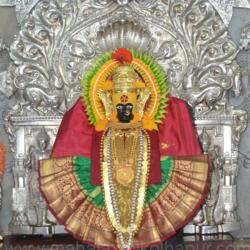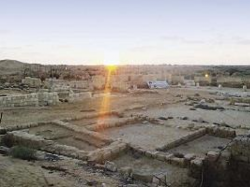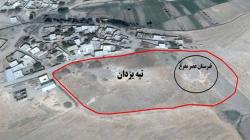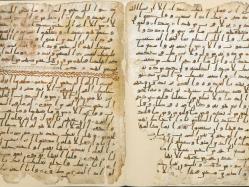INSTITUT SUPERIEUR D'ANTHROPOLOGIE
INSTITUTE OF ANTHROPOLOGY
ONLINE COURSES / COURS A DISTANCE
FALL TERM : OCTOBER 2015
REGISTER NOW
PEROU –  Amazonie - The Mascho Piro is an uncontacted tribe of the Peruvian Amazon. They are not immune to illnesses such as the common flu and therefore the Peruvian government demands that they remain in isolation from outside communities. That is about to change. Since they have had numerous run-ins with outside communities, anthropologists are to speak with the community to determine the reason behind their flight from their traditional territory in Madre de Dios, reports Reuters. Although this can potentially place their health at risk, the government and indigenous representatives believe the Mashco Piro deserve to be attended to in what appears to be a call for help. “But we can no longer pretend they aren’t trying to make some sort of contact,” said Luis Felipe Torres the head of the state of isolated tribes team, according to Reuters. “They have a right to that, too.” Reuters reports that in the last year alone, more than 100 sightings have been recorded of the tribe in local communities. In some incidents, the interactions were not pleasant. In May, a young man was killed with an arrow from a Mashco Piro. Only last week, the Ministry of Culture approved a protection plan intended for the Mashco Piro and the surrounding communities.
Amazonie - The Mascho Piro is an uncontacted tribe of the Peruvian Amazon. They are not immune to illnesses such as the common flu and therefore the Peruvian government demands that they remain in isolation from outside communities. That is about to change. Since they have had numerous run-ins with outside communities, anthropologists are to speak with the community to determine the reason behind their flight from their traditional territory in Madre de Dios, reports Reuters. Although this can potentially place their health at risk, the government and indigenous representatives believe the Mashco Piro deserve to be attended to in what appears to be a call for help. “But we can no longer pretend they aren’t trying to make some sort of contact,” said Luis Felipe Torres the head of the state of isolated tribes team, according to Reuters. “They have a right to that, too.” Reuters reports that in the last year alone, more than 100 sightings have been recorded of the tribe in local communities. In some incidents, the interactions were not pleasant. In May, a young man was killed with an arrow from a Mashco Piro. Only last week, the Ministry of Culture approved a protection plan intended for the Mashco Piro and the surrounding communities.
http://www.peruthisweek.com/news-peru-anthropologists-to-make-contact-with-mashco-piro-107086
INDE –  Mahalaxmi - The Archaeological Survey of India (ASI) begins the chemical conservation of Mahalaxmi idol from Wednesday. The ASI will inject chemcials into the idol to slower the decaying process. The conservation process is a second one in the last 60 years after the one that was done in 1955. The method used for the chemical coating, called the 'Vajralep', which was applied to the idol. The conservation process uses chemicals made from porous stone which will be injected into the idol to fill in the cracks. The Mahalaxmi idol is said to belong to the 8th century. The idol is two feet wide and nine inches tall. It is made of ingenious rock of basaltic textures. As per the scientific report compiled by the Pune-based Institute of Research and Development in Oriental Studies (IRDOS), the hard and compact idol is fine to medium grained and nearly equigranular.
Mahalaxmi - The Archaeological Survey of India (ASI) begins the chemical conservation of Mahalaxmi idol from Wednesday. The ASI will inject chemcials into the idol to slower the decaying process. The conservation process is a second one in the last 60 years after the one that was done in 1955. The method used for the chemical coating, called the 'Vajralep', which was applied to the idol. The conservation process uses chemicals made from porous stone which will be injected into the idol to fill in the cracks. The Mahalaxmi idol is said to belong to the 8th century. The idol is two feet wide and nine inches tall. It is made of ingenious rock of basaltic textures. As per the scientific report compiled by the Pune-based Institute of Research and Development in Oriental Studies (IRDOS), the hard and compact idol is fine to medium grained and nearly equigranular.
http://www.dnaindia.com/mumbai/report-chemical-conservation-of-kolhapur-s-mahalaxmi-idol-begins-today-2107092?
EGYPTE –  Abu Mena - The archaeological city of Abu Mena, west of Alexandria, the only Coptic archeological site in Egypt registered on the UNESCO World Heritage list, is threatened by the 5.5 meter rise of groundwater levels in the area. Abu Mena, which is an important Christian pilgrimage destination, is located in the city of Borg al-Arab, about 120 kilometers west of Alexandria. The 970-acre city includes a monastery, a church, and an archaeological cemetery of Saint Abu Mena, which has been completely flooded by groundwater.
Abu Mena - The archaeological city of Abu Mena, west of Alexandria, the only Coptic archeological site in Egypt registered on the UNESCO World Heritage list, is threatened by the 5.5 meter rise of groundwater levels in the area. Abu Mena, which is an important Christian pilgrimage destination, is located in the city of Borg al-Arab, about 120 kilometers west of Alexandria. The 970-acre city includes a monastery, a church, and an archaeological cemetery of Saint Abu Mena, which has been completely flooded by groundwater.
http://www.egyptindependent.com//news/groundwater-threatens-flood-abu-mena-city
ROYAUME UNI –  Talsarn - A team of archaeologists are desperately trying to locate the remains of a 12th century nunnery at Talsarn. But, members of the Dyfed Archaeological Trust admitted this week that, despite unearthing an 18th-century cobbled courtyard and driveway at Llanllyr, the Cistercian nunnery — a daughter house of Strata Florida — remained frustratingly elusive. The team know from ancient doc-umentation that the nunnery was founded by Rhys ap Gruffudd, in 1180, and existed for more than 350 years before being dissolved in 1535. “Nunneries are very rare in Wales. Ecclesiastical monastic records show that the Llanllyr site came into the ownership of the Lloyd family in the 17th century. The cobbled area and walls the team have discovered are thought to be the original drive-way and courtyard and garden of the original mansion, which was replaced by the existing house in 1825. The burning question is whether they were built over the remains of the old nunnery.
Talsarn - A team of archaeologists are desperately trying to locate the remains of a 12th century nunnery at Talsarn. But, members of the Dyfed Archaeological Trust admitted this week that, despite unearthing an 18th-century cobbled courtyard and driveway at Llanllyr, the Cistercian nunnery — a daughter house of Strata Florida — remained frustratingly elusive. The team know from ancient doc-umentation that the nunnery was founded by Rhys ap Gruffudd, in 1180, and existed for more than 350 years before being dissolved in 1535. “Nunneries are very rare in Wales. Ecclesiastical monastic records show that the Llanllyr site came into the ownership of the Lloyd family in the 17th century. The cobbled area and walls the team have discovered are thought to be the original drive-way and courtyard and garden of the original mansion, which was replaced by the existing house in 1825. The burning question is whether they were built over the remains of the old nunnery.
http://www.cambrian-news.co.uk/news/i/49598/?
IRAN –  Taq-e Bostan - Artifacts dating back to the Early- and Middle-Bronze as well as Iron ages have been unearthed from Parthian graveyard in Taq-e Bostan, Kermanshah province, said Sajjad Ali-Beigi, caretaker of an archeological team, which is conducting excavations at the cemetery. "The main objective of the project is to determine the precincts of the historic site and preserve its archeological remains," he added. The expert said the decision to conduct the demarcation project came after Taq-e Bostan Municipality constructed buildings and expanded urban green space in the vicinity of the site. "There were fears that the construction projects would seriously damage the historical site," he said. Ali-Beigi said the project would shed the light on the diet and lifestyle of people as well as burial rituals of those who once lived in the area. "Stone blades have been discovered at the site, which highlights the potentials for Neolithic era," he said. He continued that the demarcation project was of high importance, as the historical cemetery of Taq-e Bostan is up for registration on the UNESCO World Heritage List and the project could help compile further evidence. "The demarcation project will provide researchers with adequate information to complete the case of cemetery," he said. Ali-Beigi said Taq-e Bostan has been encircled by numerous historical sites from the Parthian era, most of which have remained undisturbed and unexcavated. Pointing to Anahita Temple as one of such important places, Ali-Beigi said the temple was discovered accidentally by municipal workers, who were planting trees in the nearby forest park, in 1969. "Anahita Temple has been damaged due to negligence and unsystematic excavations," he said, adding the undergoing excavation project would help prevent further damages.
Taq-e Bostan - Artifacts dating back to the Early- and Middle-Bronze as well as Iron ages have been unearthed from Parthian graveyard in Taq-e Bostan, Kermanshah province, said Sajjad Ali-Beigi, caretaker of an archeological team, which is conducting excavations at the cemetery. "The main objective of the project is to determine the precincts of the historic site and preserve its archeological remains," he added. The expert said the decision to conduct the demarcation project came after Taq-e Bostan Municipality constructed buildings and expanded urban green space in the vicinity of the site. "There were fears that the construction projects would seriously damage the historical site," he said. Ali-Beigi said the project would shed the light on the diet and lifestyle of people as well as burial rituals of those who once lived in the area. "Stone blades have been discovered at the site, which highlights the potentials for Neolithic era," he said. He continued that the demarcation project was of high importance, as the historical cemetery of Taq-e Bostan is up for registration on the UNESCO World Heritage List and the project could help compile further evidence. "The demarcation project will provide researchers with adequate information to complete the case of cemetery," he said. Ali-Beigi said Taq-e Bostan has been encircled by numerous historical sites from the Parthian era, most of which have remained undisturbed and unexcavated. Pointing to Anahita Temple as one of such important places, Ali-Beigi said the temple was discovered accidentally by municipal workers, who were planting trees in the nearby forest park, in 1969. "Anahita Temple has been damaged due to negligence and unsystematic excavations," he said, adding the undergoing excavation project would help prevent further damages.
http://www.iran-daily.com/News/123007.html?
ROYAUME UNI –  Birmingham - Fragments of what is thought to be the oldest version of the Koran in the world have been found after it lay unrecognised in a library for 100 years. Researchers from the University of Birmingham say the fragments are at least 1,370 years old. Written on sheep or goat skin, the pages back to between AD 568 and 645 with 95.4 per cent accuracy, radiocarbon dating tests have indicated. David Thomas, a professor of Christianity and Islam at the University of Birmingham, told the BBC this meant the fragments could have been written “within a few years of the actual founding of Islam”. “According to Muslim tradition, the Prophet Muhammad received the revelations that form the Koran, the scripture of Islam, between the years 610 and 632, the year of his death.” Professor Thomas said: “The person who actually wrote it could well have known the Prophet Muhammad. He would have seen him probably, he would maybe have heard him preach. He may have known him personally – and that really is quite a thought to conjure with.” The manuscript has been in the University of Birmingham’s Cadbury Research Library for nearly 100 years. It is part of the Mingana Collection of Middle Eastern documents gathered in the 1920s. Written in an early form of Arabic called Hijazi on two parchment leaves, the manuscript contains parts of the Suras (chapters) 18 to 20.
Birmingham - Fragments of what is thought to be the oldest version of the Koran in the world have been found after it lay unrecognised in a library for 100 years. Researchers from the University of Birmingham say the fragments are at least 1,370 years old. Written on sheep or goat skin, the pages back to between AD 568 and 645 with 95.4 per cent accuracy, radiocarbon dating tests have indicated. David Thomas, a professor of Christianity and Islam at the University of Birmingham, told the BBC this meant the fragments could have been written “within a few years of the actual founding of Islam”. “According to Muslim tradition, the Prophet Muhammad received the revelations that form the Koran, the scripture of Islam, between the years 610 and 632, the year of his death.” Professor Thomas said: “The person who actually wrote it could well have known the Prophet Muhammad. He would have seen him probably, he would maybe have heard him preach. He may have known him personally – and that really is quite a thought to conjure with.” The manuscript has been in the University of Birmingham’s Cadbury Research Library for nearly 100 years. It is part of the Mingana Collection of Middle Eastern documents gathered in the 1920s. Written in an early form of Arabic called Hijazi on two parchment leaves, the manuscript contains parts of the Suras (chapters) 18 to 20.
http://www.independent.co.uk/news/uk/home-news/worlds-oldest-koran-discovered-in-birmingham-10406320.html